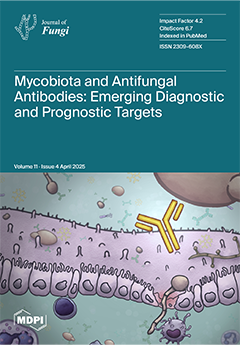Coccidioidomycosis is a fungal disease affecting humans and other mammals caused by environmental pathogens of the genus
Coccidioides. Human exposure to the pathogen occurs via inhalation of spores aerosolized from soil. Thus, understanding the ecological factors that shape the distribution of
Coccidioides
[...] Read more.
Coccidioidomycosis is a fungal disease affecting humans and other mammals caused by environmental pathogens of the genus
Coccidioides. Human exposure to the pathogen occurs via inhalation of spores aerosolized from soil. Thus, understanding the ecological factors that shape the distribution of
Coccidioides in soils is important for minimizing the risk of human exposure, though this task remains challenging due to the pathogen’s highly variable spatial distribution. Here, we examined the associations between the soil microbial community and
Coccidioides immitis’ presence within the Carrizo Plain National Monument, a minimally disturbed grassland ecosystem, and the site of a longitudinal study examining the effects of rodents and their burrows on
C. immitis’ presence in soils. Using internal transcribed spacer 2 (ITS2) and 16S amplicon sequencing to characterize the soil fungal and bacterial communities, we found over 30 fungal species, including several other members of the Onygenales order, that co-occurred with
C. immitis more frequently than would be expected by chance.
Coccidioides-positive samples were significantly higher in fungal and bacterial diversity than negative samples, an association partly driven by higher
Coccidioides presence within rodent burrows compared to surface soils. Soil source (i.e., rodent burrow versus surface soil) explained the largest amount of variation in bacterial and fungal community diversity and composition, with soils collected from rodent burrows having higher fungal and bacterial diversity than those collected from adjacent surface soils. While prior evidence is mixed regarding the relationship between the presence of
Coccidioides and microbial diversity, we find that favorable microhabitats, such as rodent burrows, lead to a positive association between soil microbial diversity and
Coccidioides presence, particularly in otherwise resource-limited natural environments.
Full article






